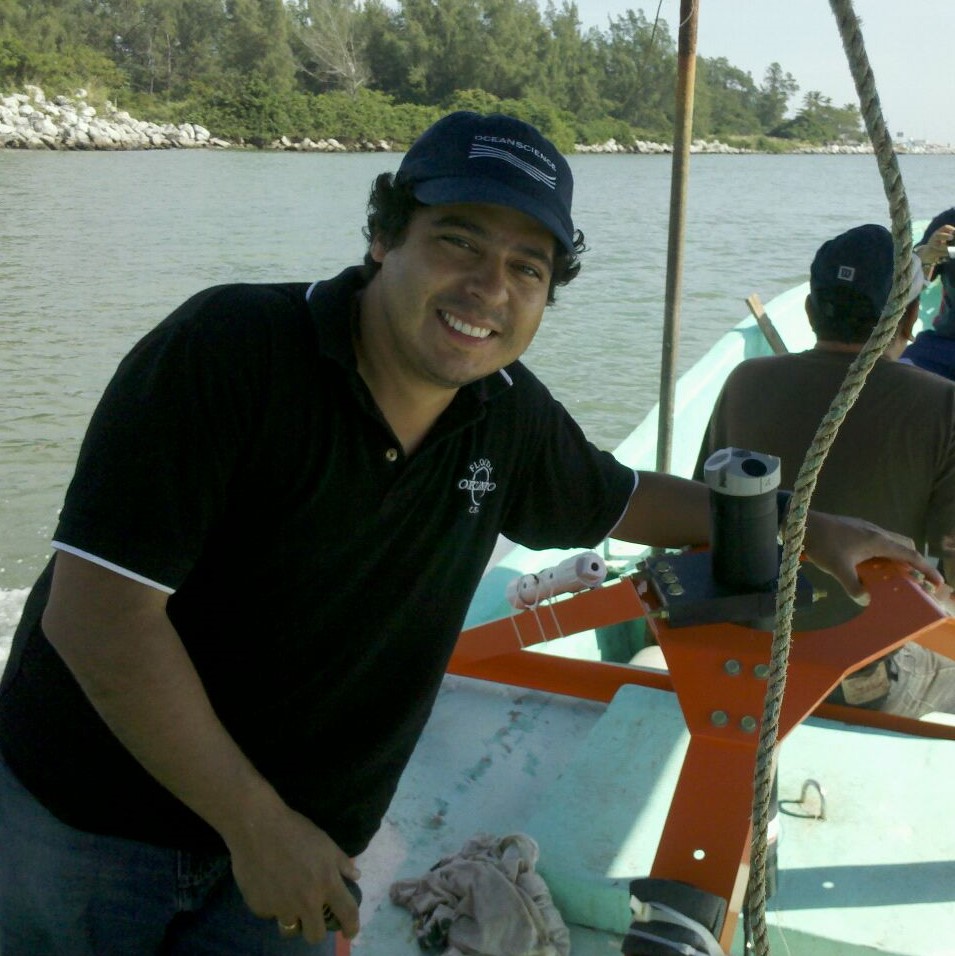
Short biography:
Education:
PhD Physical Oceanography 2006 CICESE (Ensenada, Mexico)
MS Physical Oceanography 2002 CICESE (Ensenada, Mexico)
BS Atmospheric Sciences 1999 Universidad Veracruzana (Xalapa, Mexico)
Positions held:
2012 - present: Research Professor, CICESE; Ensenada, Mexico.
2010 - 2011: Research Professor, CICATA - National Polytechnic Institution (IPN); Altamira, Mexico.
2007 - 2009: Research Associate (postdoctoral), COAS - Oregon State University; Corvallis, USA
Research interests:
Mostly numerical ocean modeling, coupling simple biogeochemical models with regional hydrodynamic models. In addition to this indoor, theoretical research, I do some multidisciplinary work. My multidisciplinary interests include (and are not limited to): near-coastal monitoring, analysis of oceanic and atmospheric in-situ and remote-sensing data, and wind- and solar-energy prospection.
Abstract:
Physical-biogeochemical Nitrate-Phytoplankton-Zooplankton-Detritus (NPZD) numerical models are used to study the variability of nutrients and phytoplankton biomass in coastal waters off Baja California Peninsula, a region of high socioeconomic importance located in the southern California Current System. The focus of these analyses has been the effects of interannual climatic anomalies. For example, the year 2006 was anomalously warm and with low chlorophyll (Chl) levels, associated with warm phases of El Niño-Southern Oscillation (ENSO) and the Pacific Decadal Oscillation (PDO) and a weakening of the North Pacific Gyre Oscillation (NPGO). The year 2011, on the other hand, was a cold year with enhanced upwelling during the spring, associated with cold phases of ENSO and PDO and an intensification of the NPGO. The effects of the North Pacific “Blob” have been also analyzed, which include an intense deepening of the nutricline and the thermocline, and hence of the subsurface Chl maximum, during the 2013-2016 period. Long-term changes in the nutrients/phytoplankton fields along the Baja California Peninsula associated to climate change have been also explored. Downscaling of a global circulation model indicates that coastal upwelling overcomes the increased stratification under high greenhouse-gas emission scenarios (RCP6.0 and RCP8.5) by mid 21st century.
Arranged date for the seminar talk: September 2, 2019 at
NERSC i 'the lecture room' at 14:15 PM.
